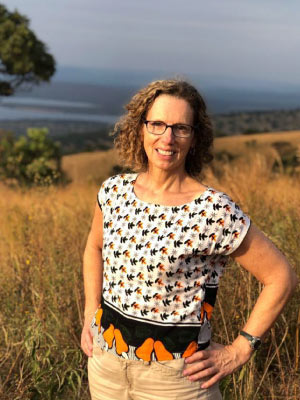
“I’ve found, over the years, that the terminology with land tenure is often kind of murky,” says Lisa Naughton, faculty affiliate in the Nelson institute’s Center for Sustainability and the Global Environment (SAGE). As she defines it, land tenure is an umbrella term that encompasses the policies and institutions that determine who can use what, how, and for how long. It’s a concept that’s been around since the feudal system, but one that has grown increasingly complex amid climate change and biodiversity loss.

On September 19, Naughton spoke at a Weston Roundtable Lecture, a weekly discussion hosted by SAGE. In her talk,“Good for the Poor, Good for the Forest?” Naughton discussed the concepts of tenure, its relationship to deforestation, and how we can move forward.
Here are four things you might not have known about land tenure.
- Good land tenure works against good biodiversity.
According to a map that Holly Gibbs, fellow SAGE researcher, created as a graduate student, the countries with problematic property rights have the highest carbon density and biodiversity. “If the planet is hoping that tropical forests will sustain biodiversity and will help offset some carbon emissions, we have to pay attention to land tenure,” Naughton explains. - It’s not as simple as creating more protected areas.
To sustain biodiversity, we need to expand the world’s protected areas … but people already live there. The people who live and depend on that land can’t (and shouldn’t) be removed, Naughton says, nor is it possible to pay all of them a fee. - Formalizing land tenure can both slow and hasten deforestation …
Securing land tenure can help communities under threat from logging operations, for example, and can help inspire landowners to care for the environment. On the other hand, securing tenure can create erosive land markets, displace low-income land uses, and capitalize agriculture. To Naughton, these points are the elephant in the room when it comes to determining whether or not formalized tenure will help or harm forests. “We’re talking about South America, though … so it’s the tapir in the room,” she jokes. - … but we have to do it anyway.
“There is no choice,” Naughton concludes. “There have to be efforts to formalize land tenure, but it is a politically fraught, uncertain process, and it needs as much attention to supporting environmental governance as it does to getting the borders right.”
Watch the full talk to learn more about the relationship between land tenure and deforestation.